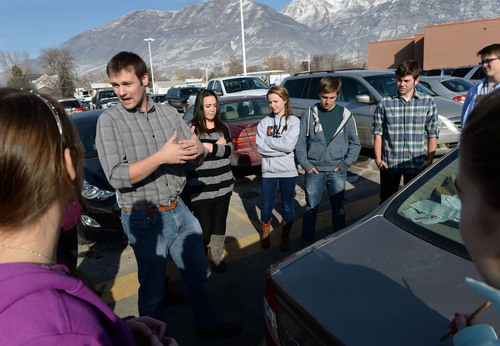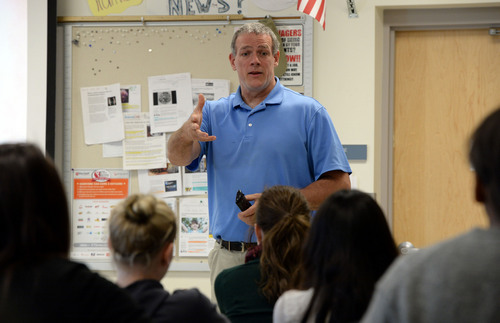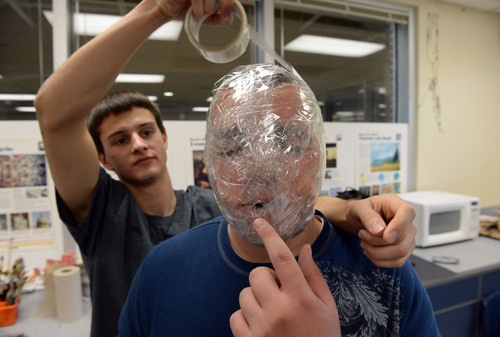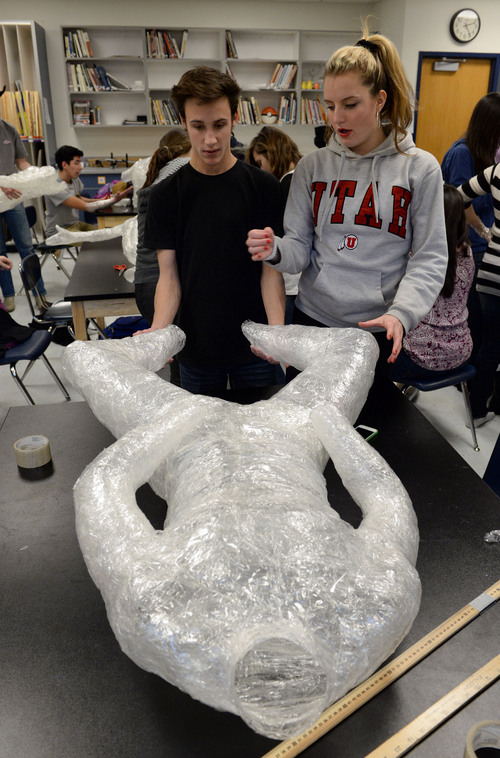This is an archived article that was published on sltrib.com in 2013, and information in the article may be outdated. It is provided only for personal research purposes and may not be reprinted.
Utah's high school graduation rate continued to soar in 2013, according to state data released Tuesday.
Last school year, 81 percent of Utah seniors graduated, compared with 78 percent the year before. It's at least the fifth year in a row that the state's high school graduation rate has increased.
"We're seeing significant improvement this year, but it's not a one-year improvement," said State Superintendent Martell Menlove. "We're seeing improvement over time."
The state's graduation rate is up 12 percentage points since 2008, when it was just 69 percent.
Also, 68 percent of Latino students graduated, up from 63 percent the year before. Latinos are Utah's largest minority group.
In fact, all of Utah's ethnic groups either saw their graduation rates hold steady or rise over last school year, though significant gaps remain between the rates of white students and those of minority groups.
For example, though graduation rates for Latinos rose, their graduation rate remains 17 percentage points behind that of white students. Experts have long said challenges such as poverty, parents' education levels or lack of familiarity with the school system, stereotyping in schools, language barriers and other factors may be behind such achievement gaps.
Pam Perlich, a senior research economist at the University of Utah, called such lower graduation rates "unacceptable." She said she was thrilled to hear of the improved rates Tuesday and is anxious to see whether they're part of a long-term turnaround.
"If we're not addressing these issues we're really watching a slow motion disaster unfold," said Perlich, who spent Tuesday discussing the state's minority graduation rates, among other topics, at a policy summit for lawmakers.
"It's to our peril to ignore the difficulties that a large and growing share of the youth population are experiencing getting through school," she said, noting that minority dropout rates have "enormous economic development consequences."
Now is an ideal time to work on improving graduation rates, Perlich said, given that the state's birthrate is down and migration to Utah has slowed.
Unless graduation rates increase significantly for minorities, she added, the state will not meet the goal set by the governor and business leaders to have 66 percent of Utahns with post secondary degrees and certificates by 2020.
As part of that goal, state and business leaders would like to see 90 percent of high school students graduate by 2020 as well.
Menlove said it will only become more difficult to increase graduation rates as the state nears that 90 percent goal.
"The investment of additional funding I think will be necessary if we're going to make it all the way to the 90 percent [goal]," Menlove said.
Utah has the lowest base per pupil funding in the nation.
A number of school districts also saw their graduation rates rise dramatically over the past year.
The Alpine District's rate shot up to 87 percent from 79 percent the year before when calculated from 10th to 12th grades. (The statewide rate is calculated from ninth to 12th grades, but about half of Utah high schools don't include ninth grades.)
John Patten, an Alpine spokesman, attributed the dramatic improvement to a number of factors. Struggling elementary students are now getting "double doses" of English and math when necessary, he said, with additional lessons sometimes before and after school.
At the junior high and high school levels, struggling students can work with teachers during "flex time," and the district redesigned its alternative high school.
Plus, he said, the district is focusing on counting graduates and dropouts as accurately as possible. For example, the district is making sure that kids with disabilities who transition into the district's technical program are not counted as dropouts.
Utah, as part of new federal requirements, began calculating its graduation rate differently within the last few years. Now, all states only count as graduates students who earn regular high school diplomas or adult education secondary diplomas by Sept. 30. Students who withdraw, are expelled or take longer than four years to receive regular high school diplomas are counted as dropouts.
Some students are considered neither dropouts nor graduates and are instead counted as continuing students or other completers.
A 2012 federal report ranked Utah's graduation rate as higher than only 14 other states, but that report relied on graduation rates for 2011. Data comparing Utah to all other states using more recent graduation rates is not yet available.
Utah school district graduation rates, 2013
Alpine, 87 percent
Canyons, 83 percent
Davis, 89 percent
Granite, 71 percent
Jordan, 84 percent
Murray, 84 percent
Salt Lake City, 73 percent —
Graduation rate increases
Utah's high school graduation rate rose 3 percent in 2013 to 81 percent. Increases were even more pronounced among demographic groups, including:
9 percent increase among English language learners.
7 percent among black students.
5 percent increase among Hispanic students.
4 percent increase among Pacific Islander students.
4 percent increase among American Indian students.
4 percent increase among economically disadvantaged students.
4 percent increase among students with disabilities.
3 percent increase among white students.
Source: Utah State Office of Education











